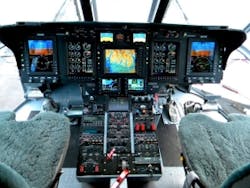Posted by John McHale WASHINGTON, 14 April 2011. More than three decades since the first of the space shuttles launched the U.S. shuttle fleet will retire and be on display at different facilities across the country. The four space shuttle orbiters will be permanently displayed at these institutions once the program ends.Shuttle Enterprise, the first orbiter built, will move from the Smithsonian's National Air and Space Museum Steven F. Udvar-Hazy Center in Virginia to the Intrepid Sea, Air & Space Museum in New York. The Udvar-Hazy Center will become the new home for shuttle Discovery, which retired after completing its 39th mission in March. Shuttle Endeavour, which is preparing for its final flight at the end of the month, will go to the California Science Center in Los Angeles. Atlantis, which will fly the last planned shuttle mission in June, will be displayed at the Kennedy Space Center Visitor Complex in Florida. "We want to thank all of the locations that expressed an interest in one of these national treasures," says NASA Administrator Charles Bolden. "This was a very difficult decision, but one that was made with the American public in mind. In the end, these choices provide the greatest number of people with the best opportunity to share in the history and accomplishments of NASA's remarkable Space Shuttle Program. These facilities we've chosen have a noteworthy legacy of preserving space artifacts and providing outstanding access to U.S. and international visitors." NASA also announced that hundreds of shuttle artifacts have been allocated to museums and education institutions including: - various shuttle simulators for the Adler Planetarium in Chicago, the Evergreen Aviation & Space Museum of McMinnville, Ore., and Texas A&M's Aerospace Engineering Department; - full fuselage trainer for the Museum of Flight in Seattle; - nose cap assembly and crew compartment trainer for the National Museum of the U.S. Air Force at Wright-Patterson Air Force Base in Ohio; - flight deck pilot and commander seats for NASA's Johnson Space Center in Houston; and - orbital maneuvering system engines for the U.S. Space and Rocket Center of Huntsville, Ala., National Air and Space Museum in Washington, and Evergreen Aviation & Space Museum. For more information about other shuttle program artifacts that are available to museums and libraries, visit: http://gsaxcess.gov/htm/nasa/userguide/NASA_SSPA_Pamphlet.pdf. NASA also is offering shuttle heat shield tiles to schools and universities that want to share technology and a piece of space history with their students. Schools can request a tile at: http://gsaxcess.gov/NASAWel.htm. For a map of the future locations for the orbiters and shuttle artifacts and for more information on visiting the facilities, visit: http://www.nasa.gov/topics/shuttle_station/features/shuttle_map.html. For more information about NASA's placement of the space shuttle orbiters, visit: http://www.nasa.gov/transition. For information about the Space Shuttle Program, visit: http://www.nasa.gov/shuttle.
Voice your opinion!
Voice your opinion!
To join the conversation, and become an exclusive member of Military Aerospace, create an account today!
New
New

